Detroit's Streetcars: Past and Present
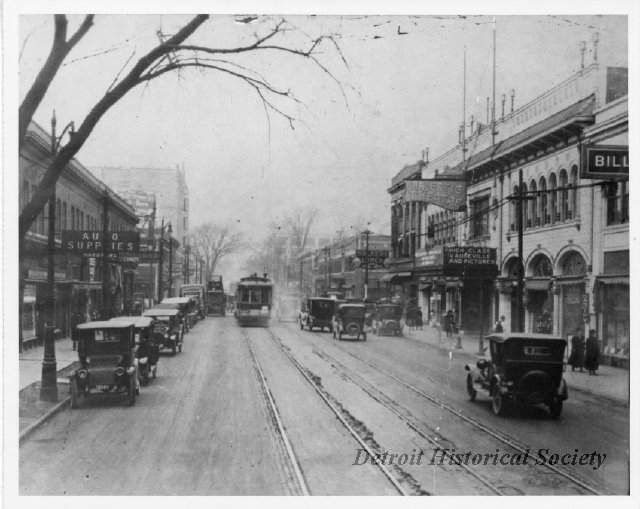
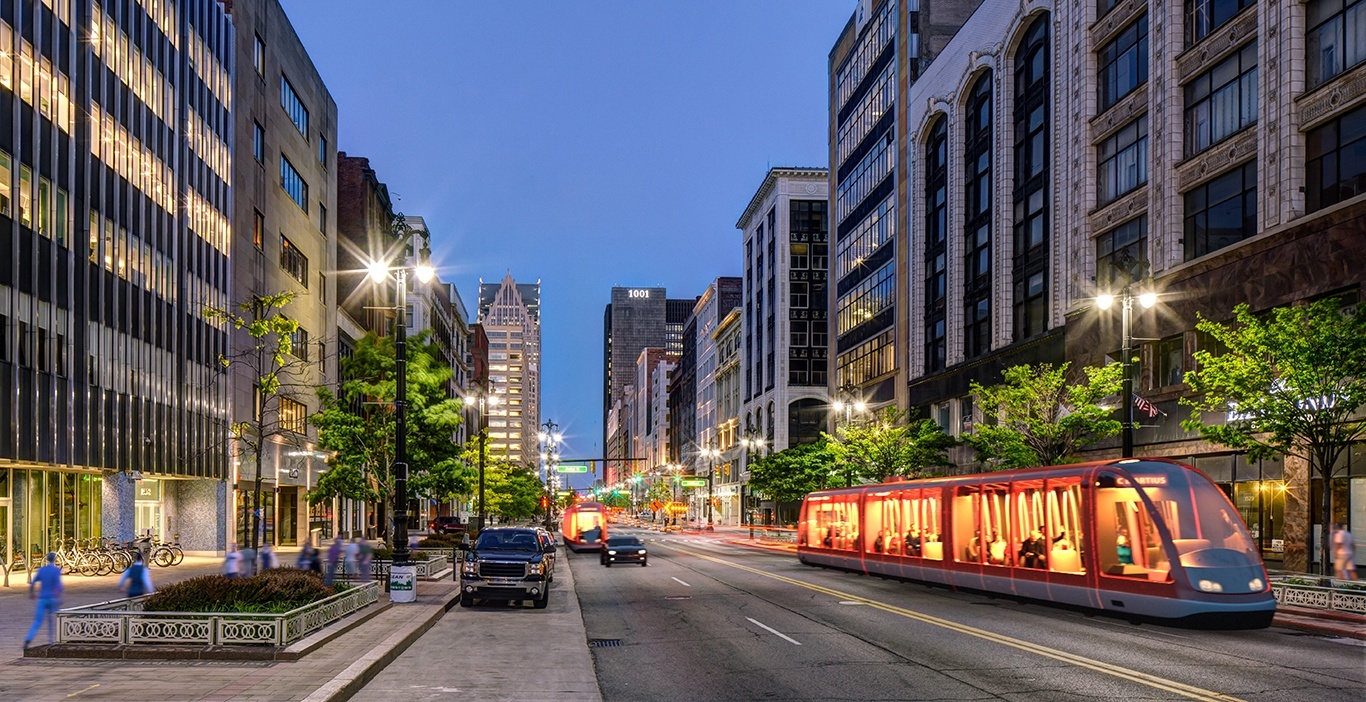 (Above: A streetcar travels down Woodward Avenue at Alexandrine, 1925; Below: Artistic rendering of the new M-1 Rail, 2014)
(Above: A streetcar travels down Woodward Avenue at Alexandrine, 1925; Below: Artistic rendering of the new M-1 Rail, 2014)
In late 2014, crews began to close sections of Woodward Avenue to make way for the new M-1 Rail (now named the QLine), a 3.3-mile streetcar system running from Congress to Grand Boulevard. The vision for the M-1 is to increase investment in the greater downtown area by connecting the Downtown, Midtown, New Center, and North End neighborhoods. All of the excitement surrounding this relatively short streetcar line makes it somewhat hard to believe that in 1922 Detroit was home to the largest municipal system of street railways in the country.
In 1862, City Council passed an ordinance for streetcar lines to be built along the main spokes of the city: East Jefferson, Woodward, Michigan, Gratiot, Grand River, and West Fort. Sixty years later, after many private mergers, the city took control of Detroit United Railway to create the Detroit Department of Street Railways, commonly known as the D.S.R. In 1923, the D.S.R. recorded 357,386,437 rides on its rail lines, some of which even extended into neighboring cities such as Grosse Pointe, Royal Oak, and Wyandotte. The city was so strained to keep up with the costs of such a large transportation system, that it began to look into alternative forms of public transit. In 1929, Herman E. Taylor, then a traffic supervisor for the D.S.R., presented a plan for a cost-effective alternative to streetcar and subway systems. He created a model for a series of underground moving sidewalks that could travel as fast as 25 MPH. The outer conveyor belt would travel at a consistent speed and be equipped with streetcar-style seats. The inner belt would slow down to allow passengers to board. Once it reached the speed of the outer belt, the gates would open to allow passengers to board the seating area. Unfortunately for Taylor, the stock market crash of 1929 forced the underground belt system to be put indefinitely on the back burner.
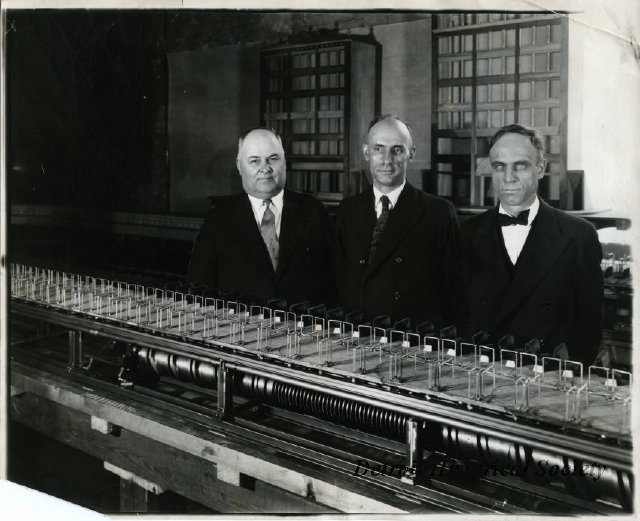 (Above: Herman E. Taylor, Del A. Smith, and Gordon V. Allen of the Department of Street Railways with their model of the "Taylor Belt Plan", 1929)
(Above: Herman E. Taylor, Del A. Smith, and Gordon V. Allen of the Department of Street Railways with their model of the "Taylor Belt Plan", 1929)
After the Depression hit, the city instead focused on decreasing the D.S.R.’s competition with buses. In 1932, the city revoked the operating rights of the Detroit Motorbus Company and restricted suburban bus systems from picking up passengers within the city. To this day, this restriction limits cooperation with suburban bus systems. During World War II, the bus system was strained under fuel and tire rations and for a short while the streetcars once again saw increased ridership in the city. However, the streetcars in operation were considered antiquated, and the city began to search for new forms of rapid transit. One proposal, titled “Common Sense About Detroit Transportation”, laid out a form of public transit that fused the need for rapid rail lines with Detroit’s love of the automobile.
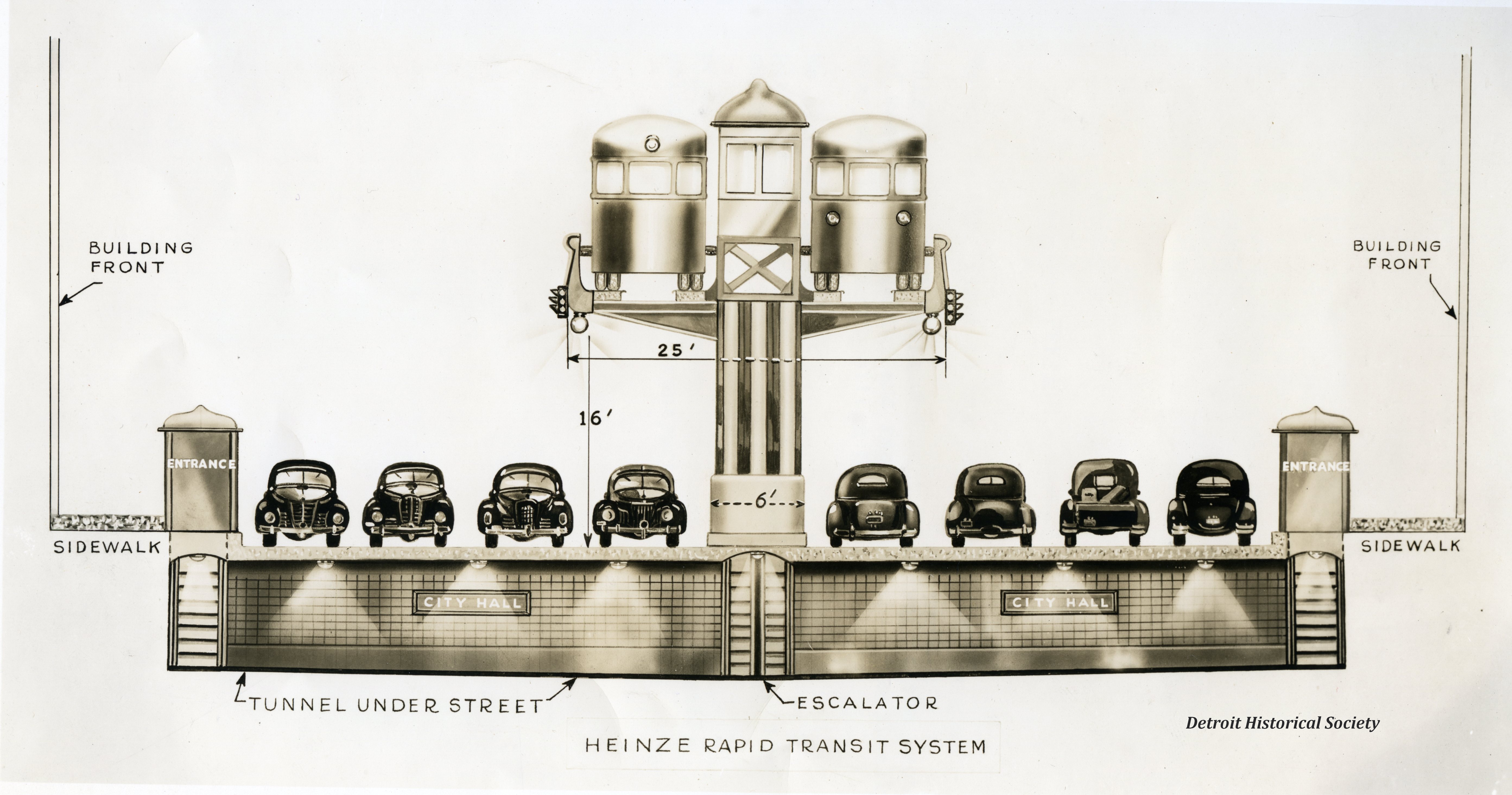 (Above: Design of the Heinze Rapid Transit System, c. 1947)
(Above: Design of the Heinze Rapid Transit System, c. 1947)
The Heinze Rapid Transit System combined a series of expressways separated by elevated trains that could travel at up to 50 MPH. The city quickly began construction on the system, and several expressways were built. And just as quickly, the city abandoned the elevated trains and adopted a plan that involved a fleet of buses that would travel along the expressway. Over the next few years, the city slowly replaced its streetcars with bus lines. By 1952, only the lines on Jefferson, Michigan, Gratiot, and Woodward remained. That same year, the oldest streetcar line in the city – the Jefferson line – was replaced by a bus route. Citing the success and cost-effectiveness of this replacement, the city set out to replace all streetcar routes with bus routes.
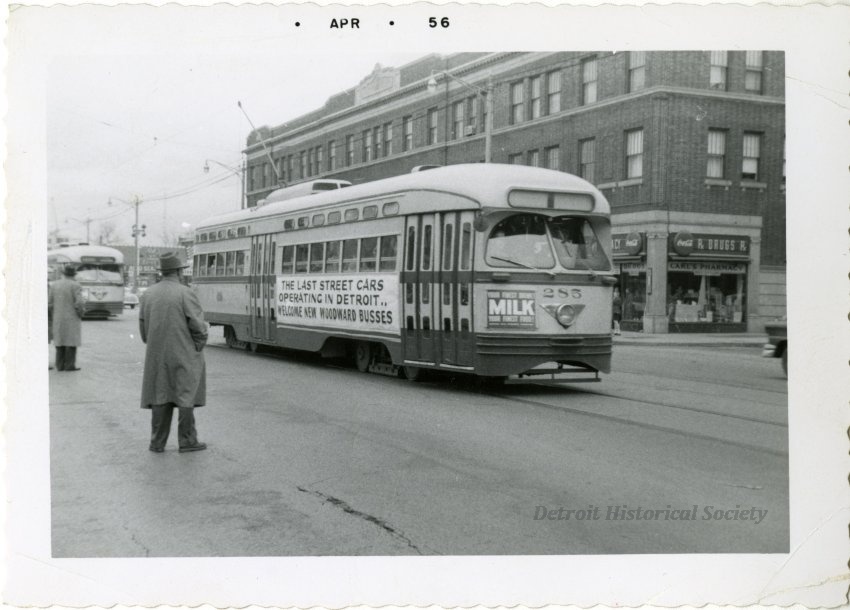 (Above: Last Day of Streetcars in Detroit Parade at the corner of Woodward & Moss, 1956)
(Above: Last Day of Streetcars in Detroit Parade at the corner of Woodward & Moss, 1956)
On April 8, 1956, Detroit held the “Last Day of Streetcars in Detroit Parade” along Woodward Avenue. The streetcars were equipped with signs advertising the new Woodward Bus Line. Vintage cars, buses, and trolleys drove up Woodward to the State Fairgrounds in celebration of the streetcars’ last day of operation. Sixty years later, in 2016, the M-1 Rail is scheduled to begin operations along a portion of this same route.

